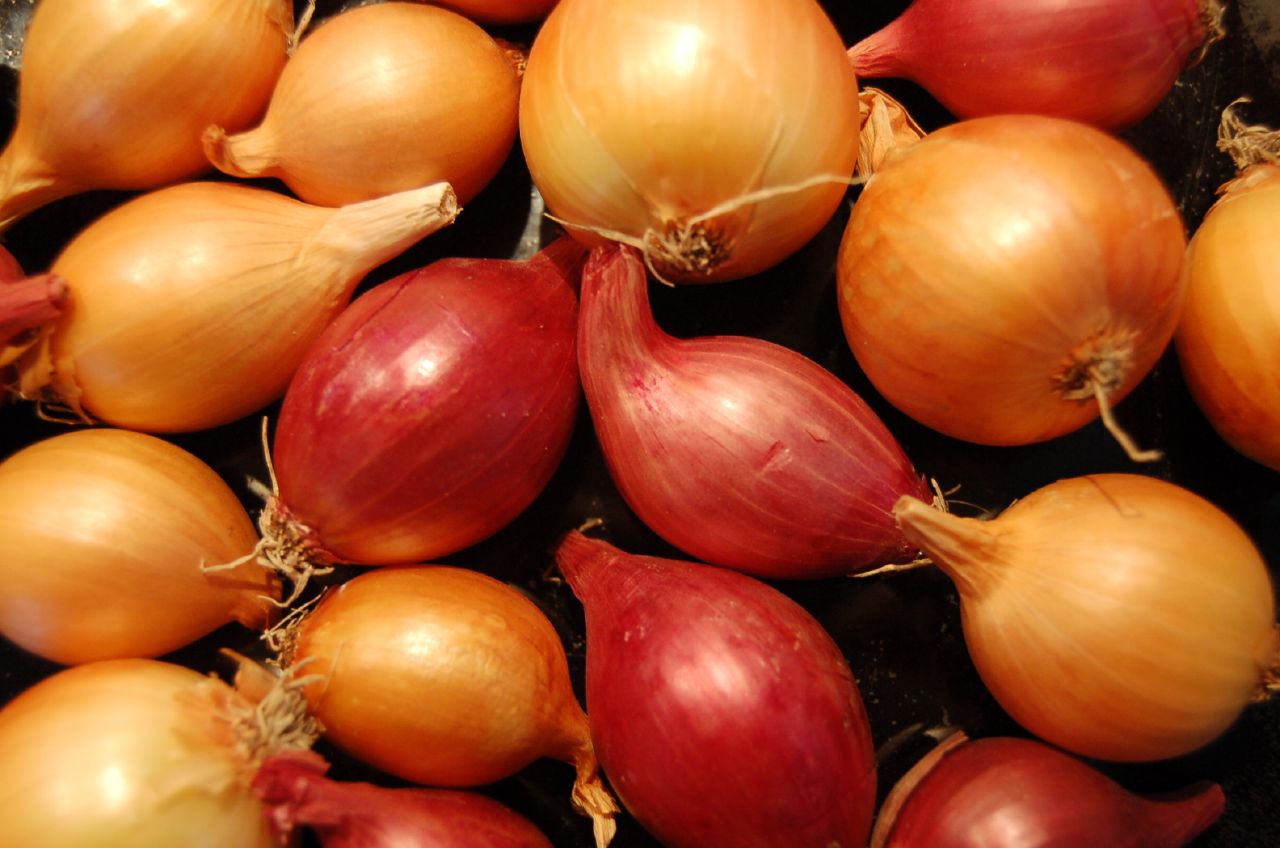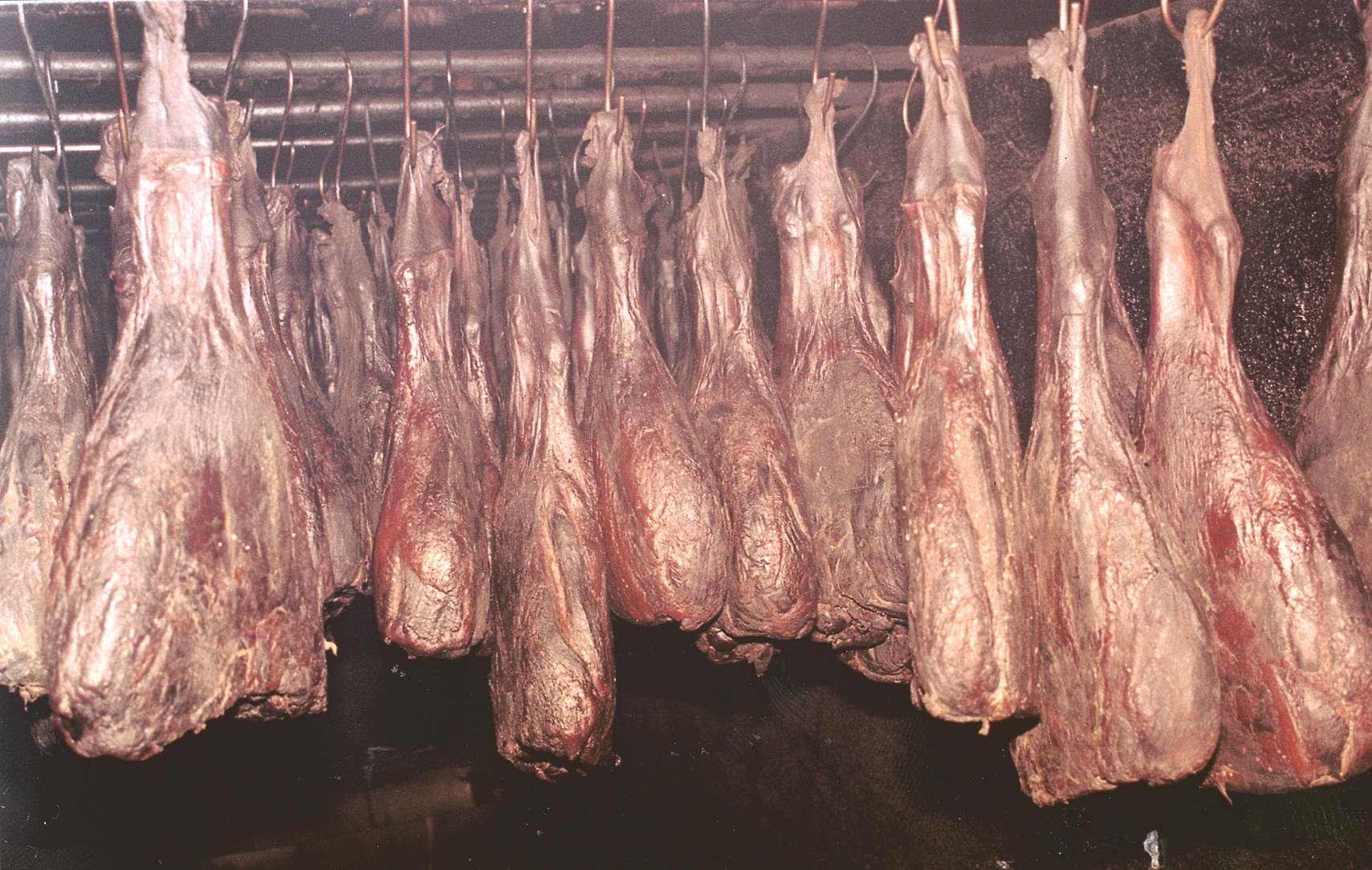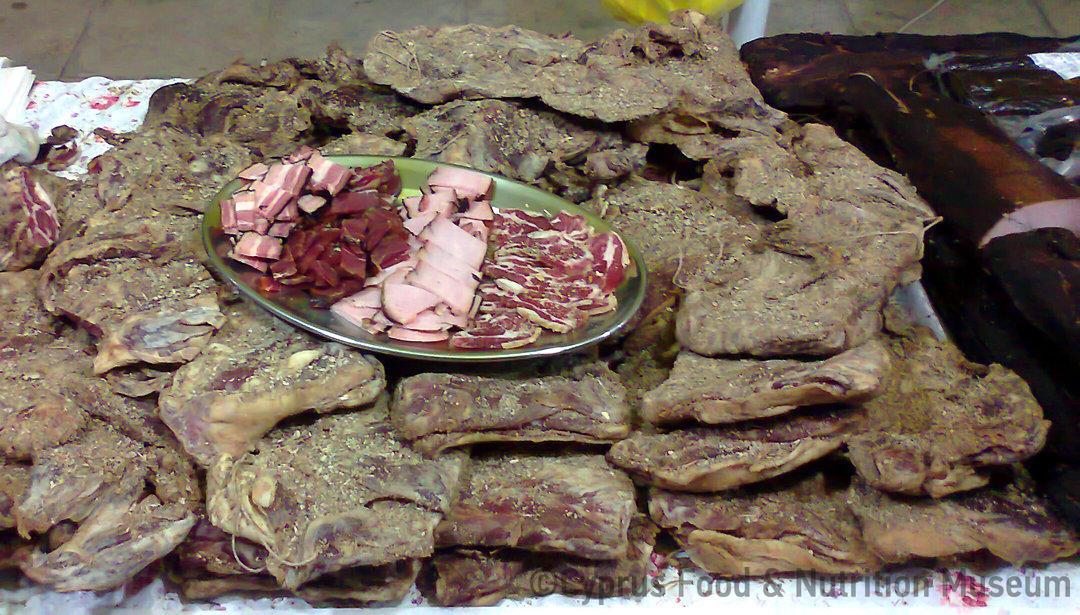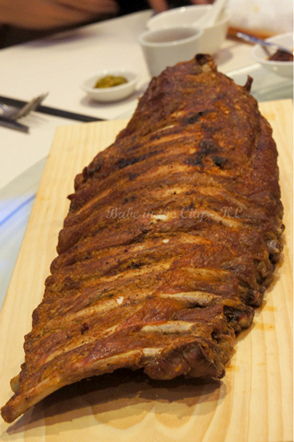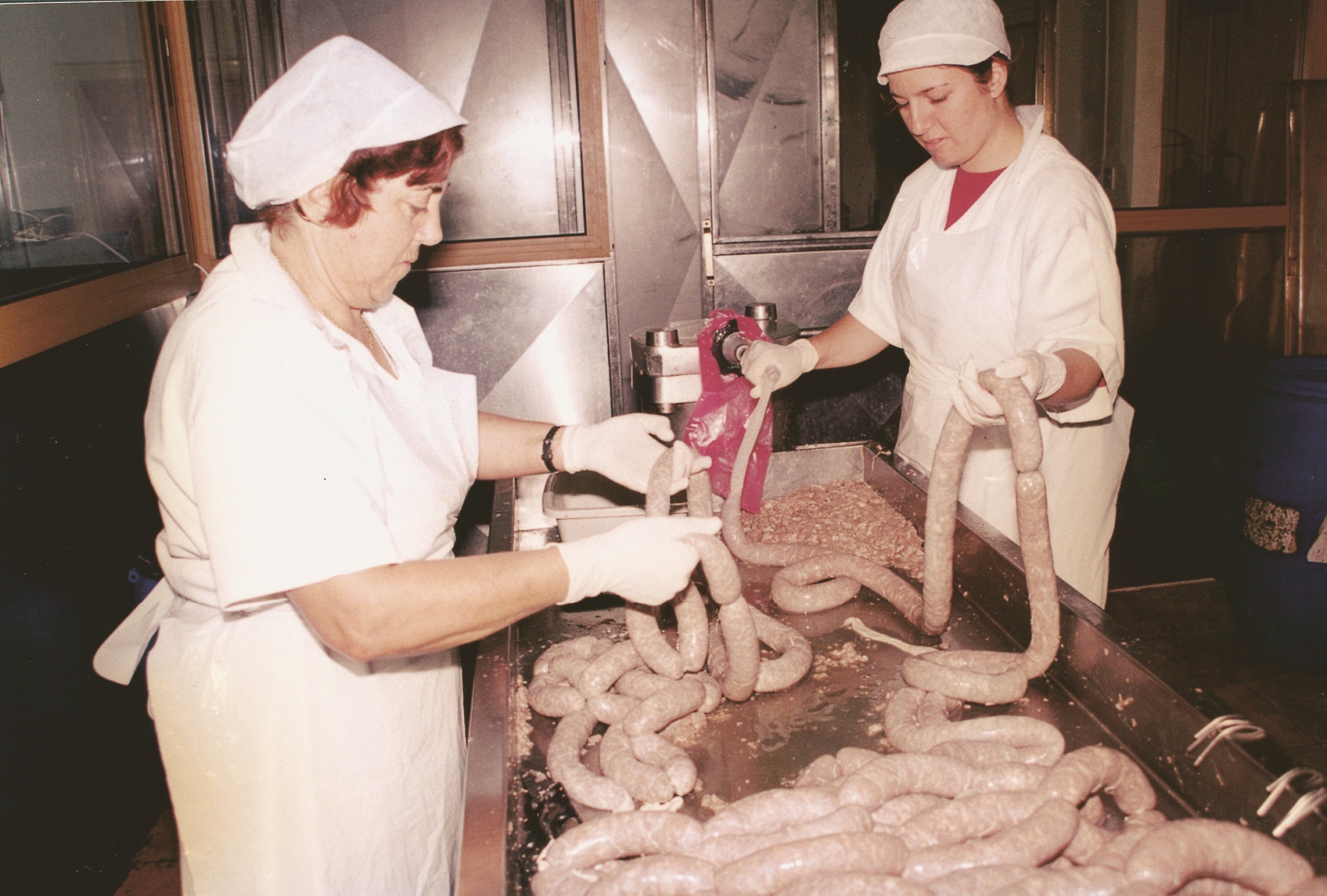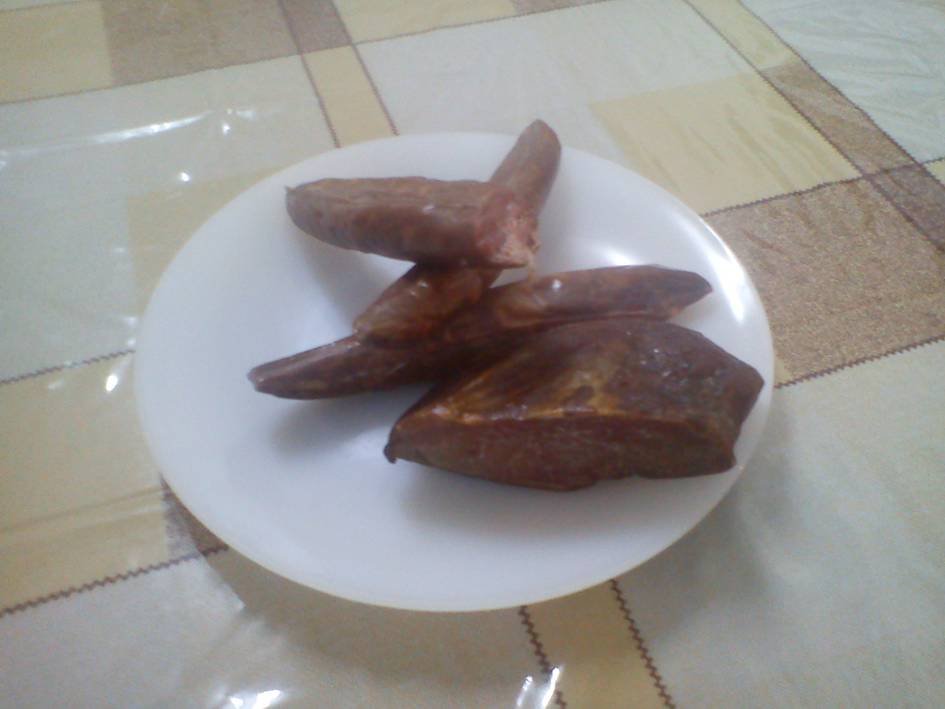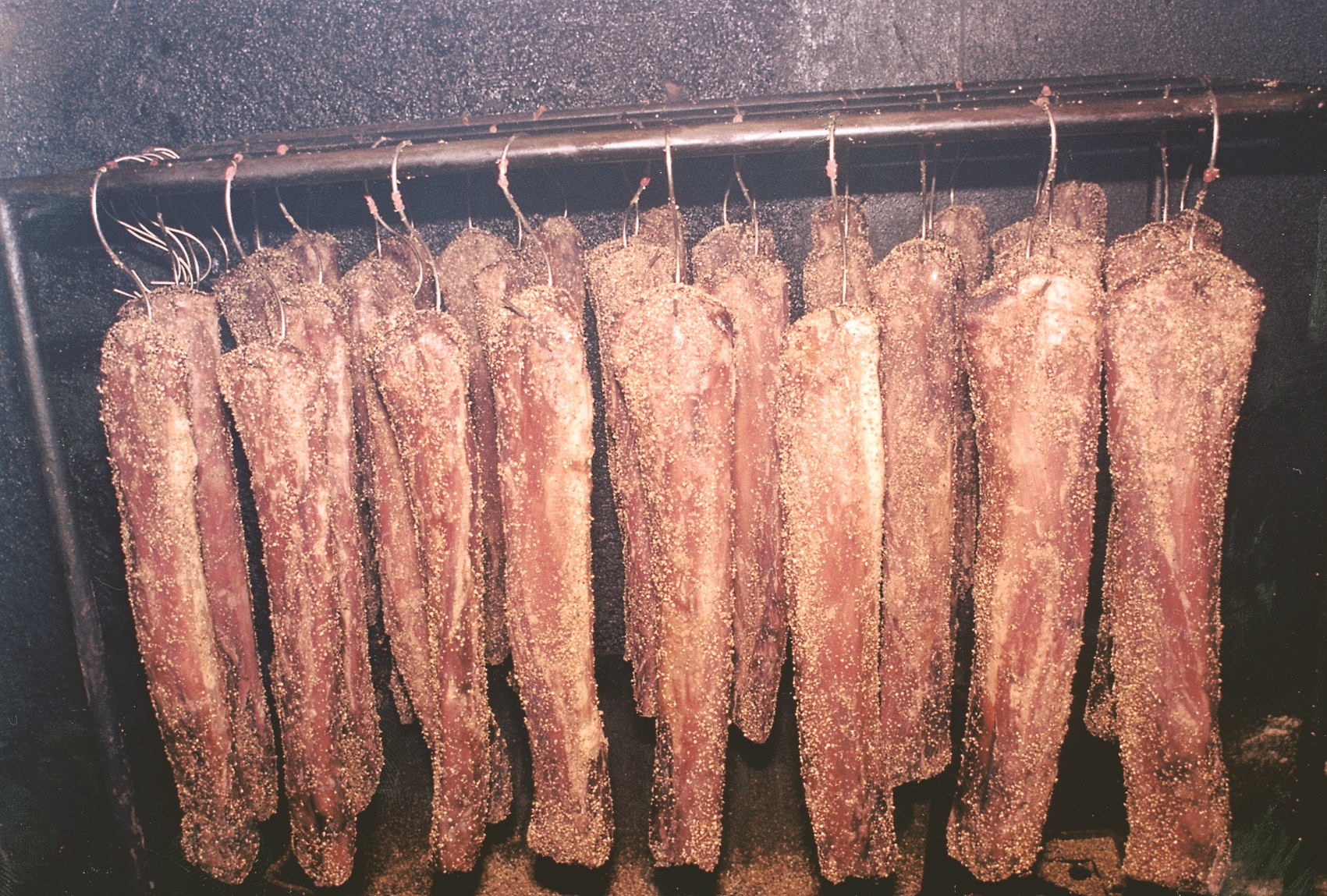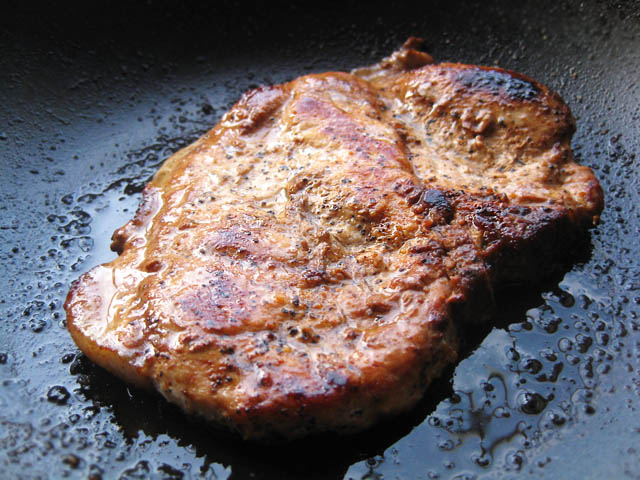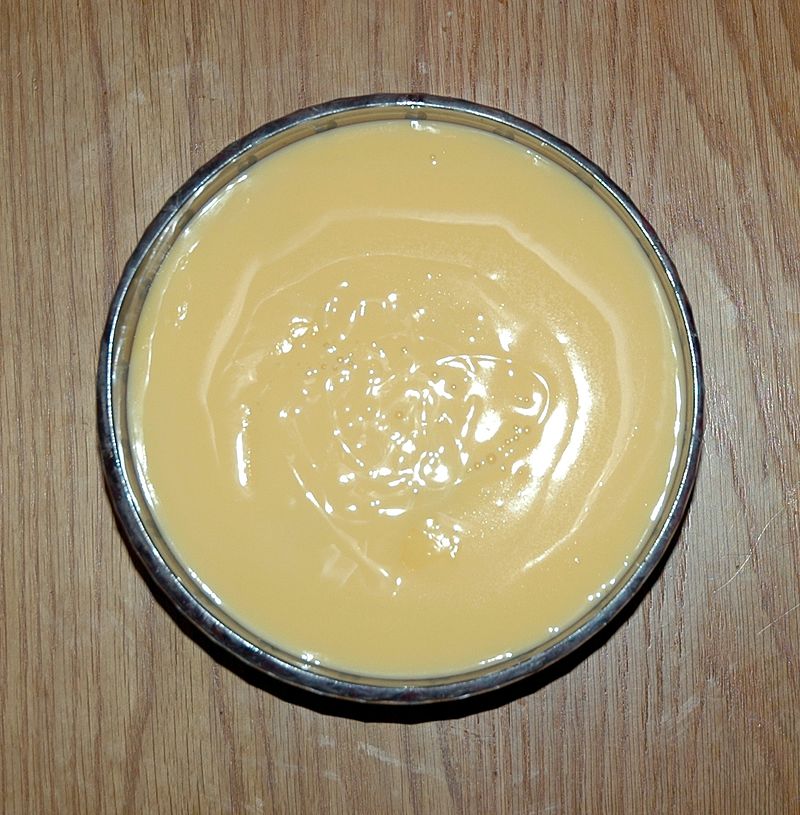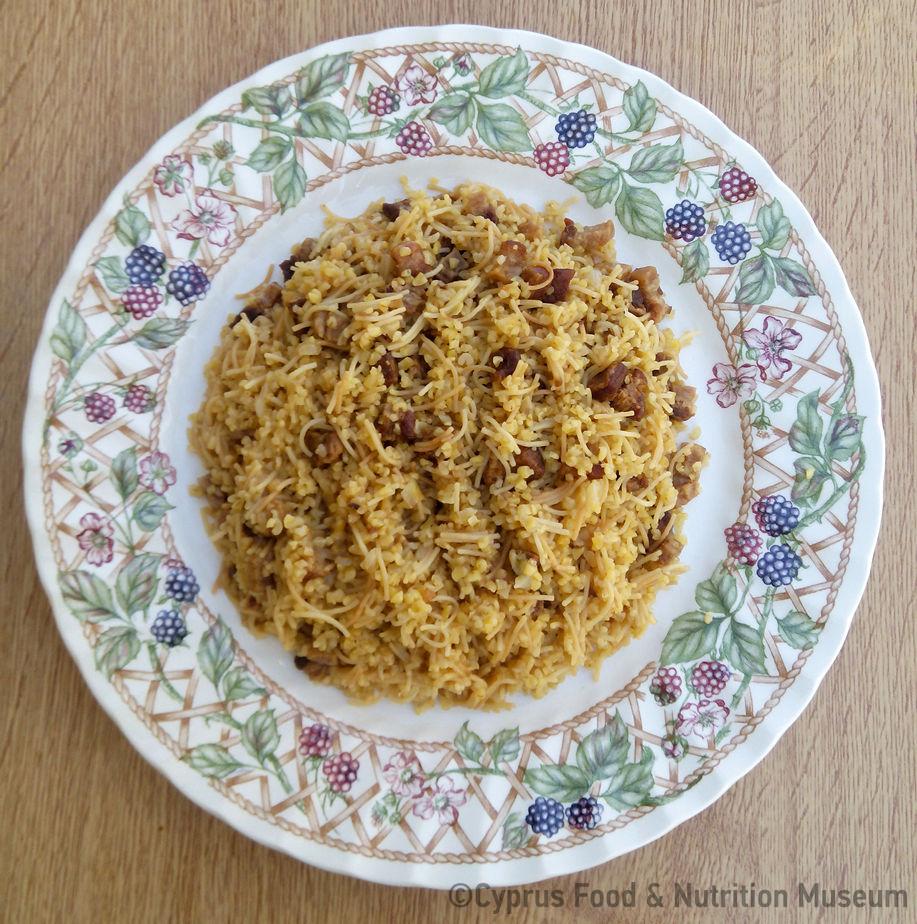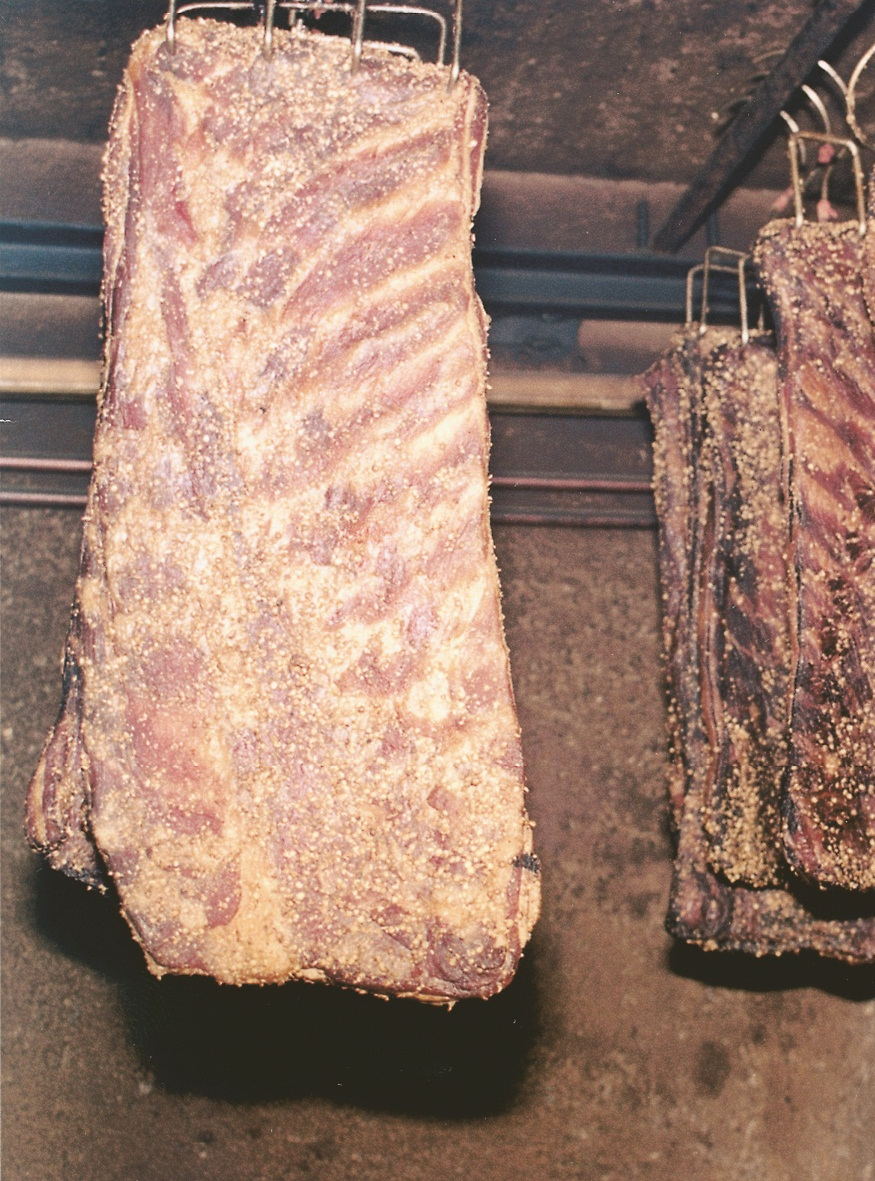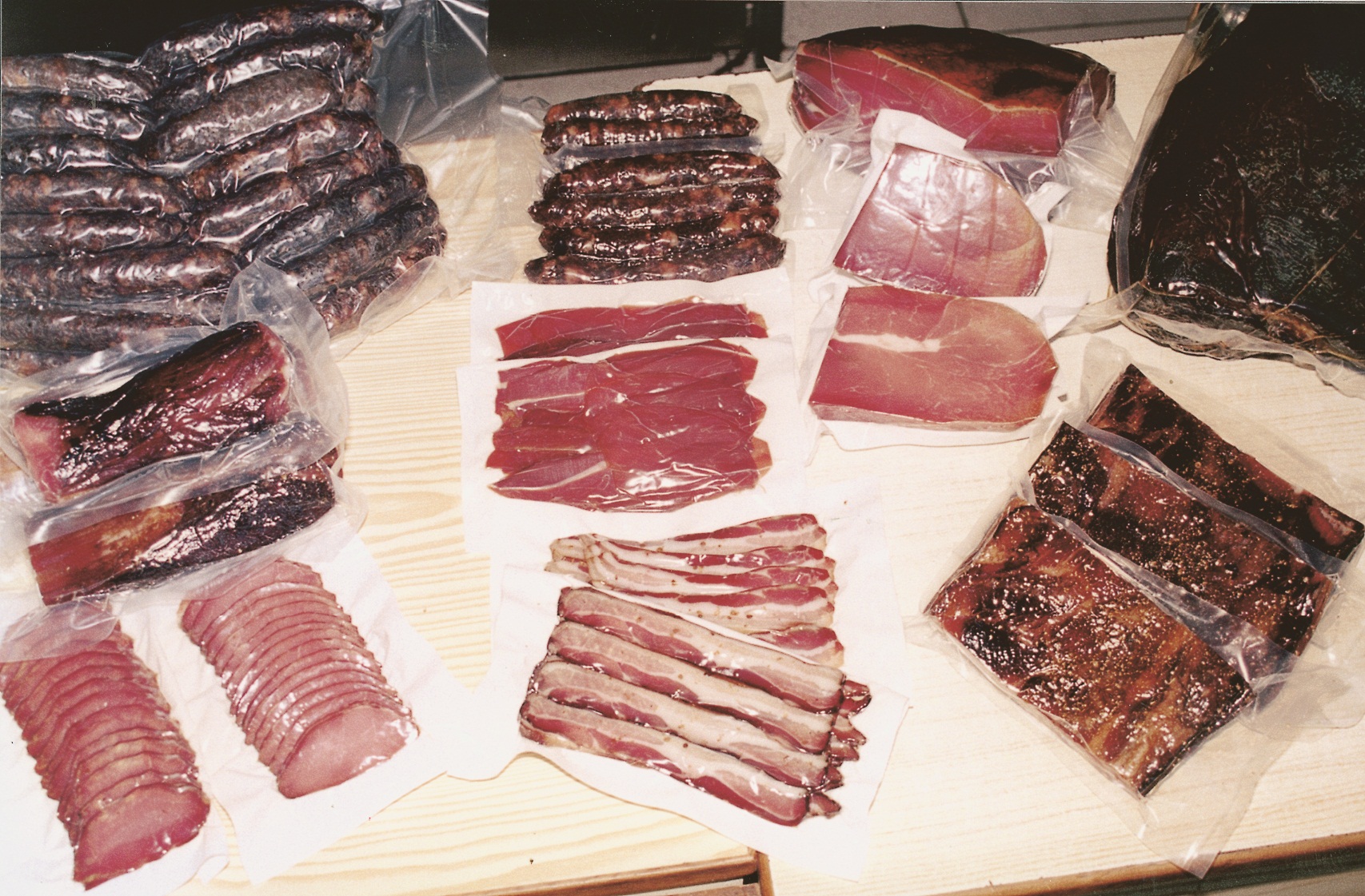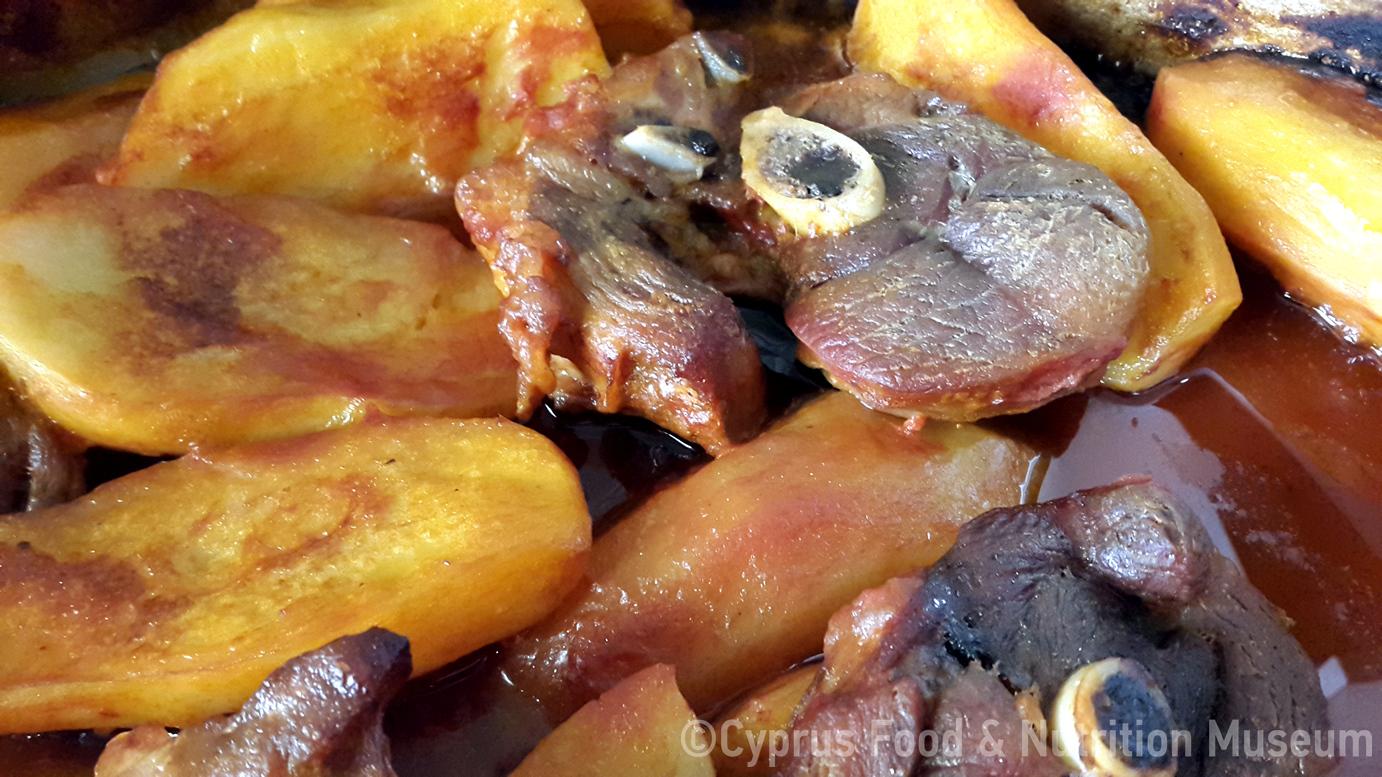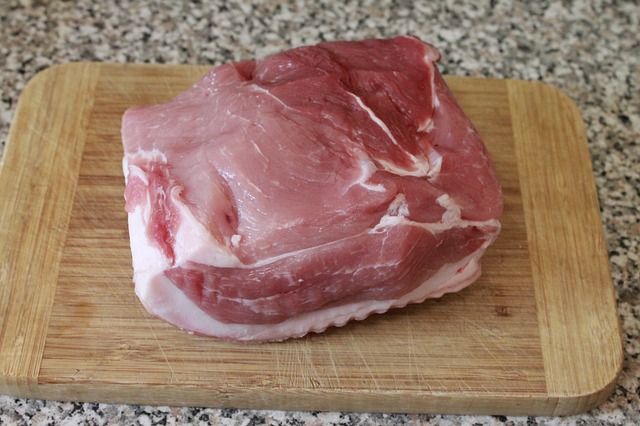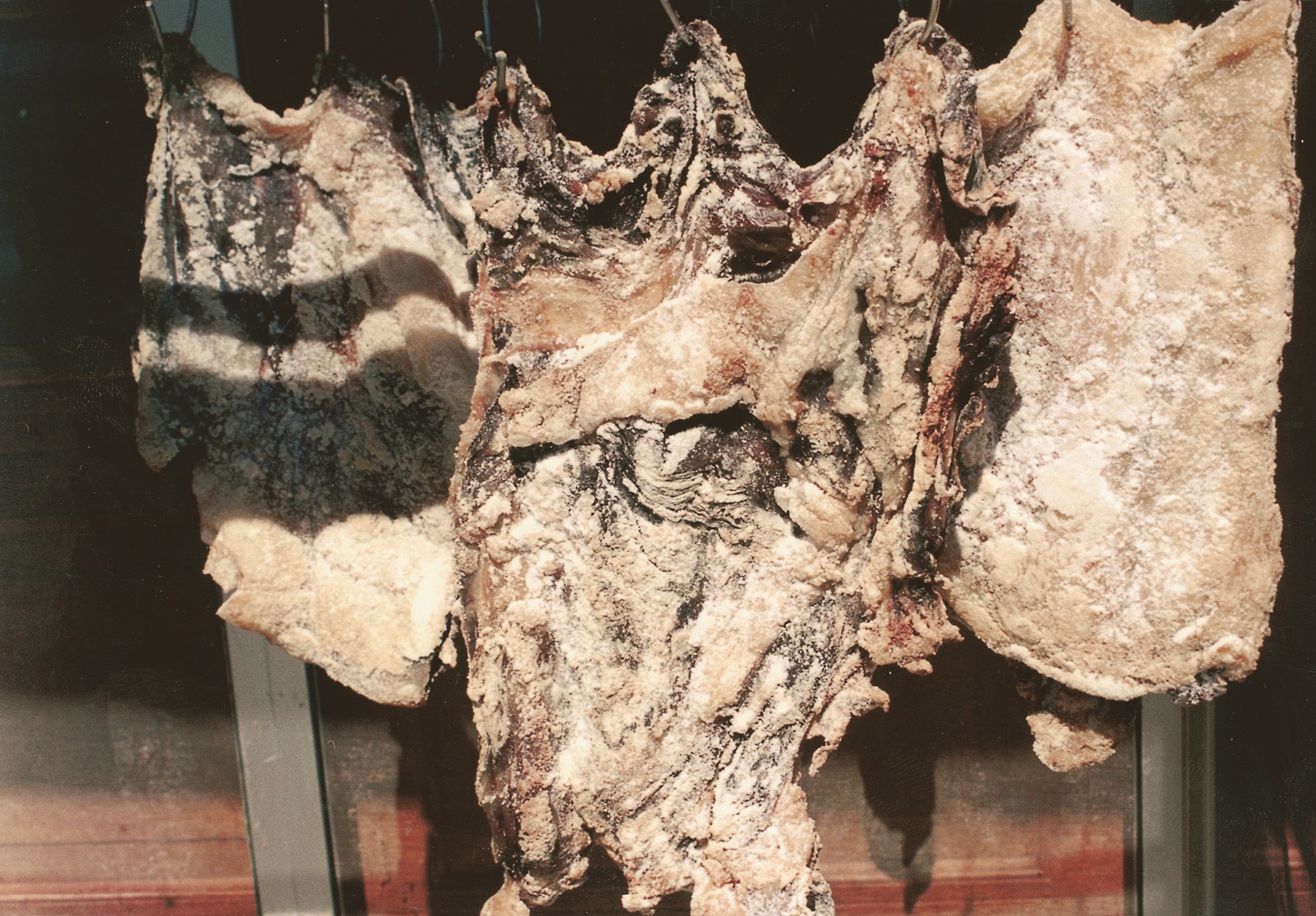Name - Origin
Cured goat meat, dried in the sun (Yangoullis 2009, entry απόχτιν,το, 72) / traditional goat meat mezé with a strong salty taste (Ministry of Agriculture 2022, article 25) / sun-cured goat meat (Kyprianou - Christodoulou 1969, 6) / salted, sun dried goat meat with bones, fried in its fat (Petrou-Poeitou 2013, entry Απόκτι-Απόχτιν, 26)
ETYM. < adoption < api + ancient optos (Yangoullis 2009, entry απόχτιν,το, 72)
Apohtin is prepared in the same way as tsamarélla, with a difference in that the meat is used together with the bones and sometimes the whole animal (apart from the head) is used when it has been opened in the middle while the entrails and the fat have been removed (Ministry of Agriculture 2011, entry 18 - Tsamarella-Apohtin).
A plump goat of at least two years old is used for apohtin. After salting and drying the goat meat, it was then washed to remove the excess salt. In Marathasa, they would sprinkle the meat with oregano and place it in clay pots and dry it in an oven instead of drying it under the sun. In other areas of Cyprus, they would fry apohtin in its fat and then sprinkle it with dried spearmint (Kythraiotou 2013, 11, 41).
“The goat is slaughtered when it is one or two years old in June. It is skinned and thinned out with a knife. The animal's brain, intestines and bone marrow are removed to prevent it from going rancid. It is salted and three rods are placed on the animal, one in the front legs, one in the middle and one in the hind legs. It is hung to dry in the sun. It is left in the sun for a fortnight. When dried, it is fried. It is cut into large pieces and boiled in large cauldrons. It is then placed in wicker baskets. It is then cut into small pieces and washed thoroughly to remove the salt. It is left to drain and then fried, a few pieces at a time, in its fat. When the pieces of meat are browned, they are placed in a basin and rubbed with dried spearmint. Once the meat has cooled, it is placed in clay pots which are tightly sealed with either savory or ash” (Hadjitheodoulou 1973, 28).
When children were at home while the adults were at work, they would rarely eat apohtin on non-fasting days (Chatzionas, 1971, 118).
It is considered a mezé of excellent taste, especially when accompanied by zivania (Xioutas 1978, 14; Ministry of Agriculture, 2011, entry 18 - Tsamarella-apohtin).
It was cooked with potatoes. Apohtin was also prepared with agrino (moufflon) meat, mainly in the villages of Paphos (Hadjitheodoulou, 1973).
Additional information and bibliography
The best apohtin in Cyprus is made in the villages of Panagia, Mylikouri, Livadia and Chandria. In Kampos tis Tsakistras and sometimes in Panagia, they would sometimes illegally make apohti from agrino (Xioutas 1978, 14).
Yangoullis K. G. (2009), Θησαυρός Κυπριακής Διαλέκτου. Ερμηνευτικό, Ετυμολογικό, Φρασεολογικό και Ονοματολογικό Λεξικό της Μεσαιωνικής και Νεότερης Κυπριακής Διαλέκτου, Βιβλιοθήκη Κυπρίων Λαϊκών Ποιητών,70, Theopress Publications, Nicosia.
Kythraiotou F. (2013), Γαστρονομικός οδηγός Μαραθάσας, Ministry of Education and Culture - Pedagogical Institute, Nicosia.
Kyprianou Ch.S. - Christodoulou M. (1969), Λαογραφικόν Λεξικόν, Nicosia.
Xioutas P. (1978), Κυπριακή λαογραφία των ζώων, Publications of the Centre for Scientific Research, XXXVIII, Nicosia.
Petrou-Poeitou E. (2013), Από πού κρατάει η σκούφια τους. Λέξεις και ιστορίες από τον κόσμο της γεύσης, Epiphaniou Publications, Nicosia.
Ministry of Agriculture, Natural Resources and Environment, Department of Agriculture (2011), Gastronomical Map of Cyprus, Press and Information Office, Nicosia.
Hadjitheodoulou I. St. (1973), «Το απόχτιν», Λαογραφική Κύπρος 3,7, 28.
Hadjionas S. (1971), «Το φαγητό στην Άλωνα», Λαογραφική Κύπρος 1,3, 118-121.
Ministry of Agriculture , Natural Resources and Environment, Department of Agriculture (2022).Gastronomic Map of Cyprus, Nicosia, Press and Information Office, 40/2022-5.000.
Other sources: Florentia Kythraiotou (2014) «Η Γαστρονομική Ταυτότητα της Μαραθάσας» στο συνέδριο «Κυπρίων Γεύσεις: Η παραδοσιακή διατροφή της Κύπρου στις τοπικές παραλλαγές της».
Demetra Demetriou, Tonia Ioakim, Ivi Michael, Stalo Lazarou / Petroula Hadjittofi, Argyro Xenophontos


